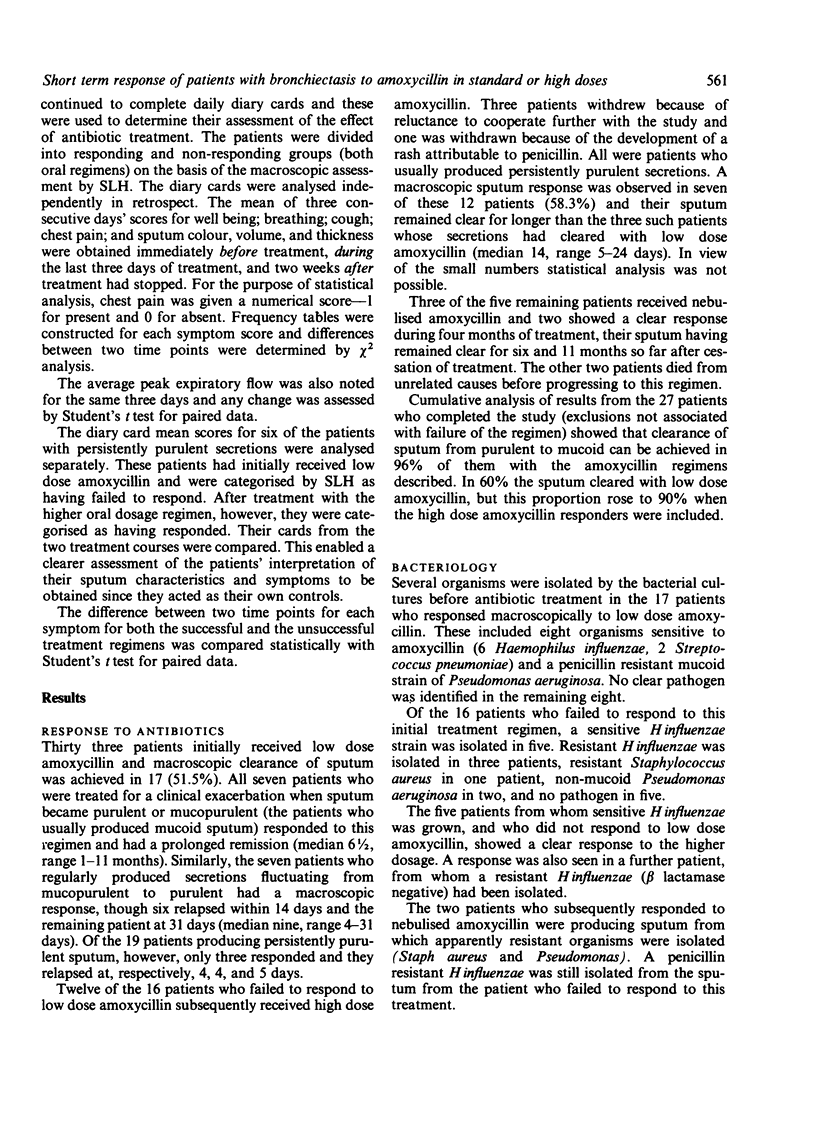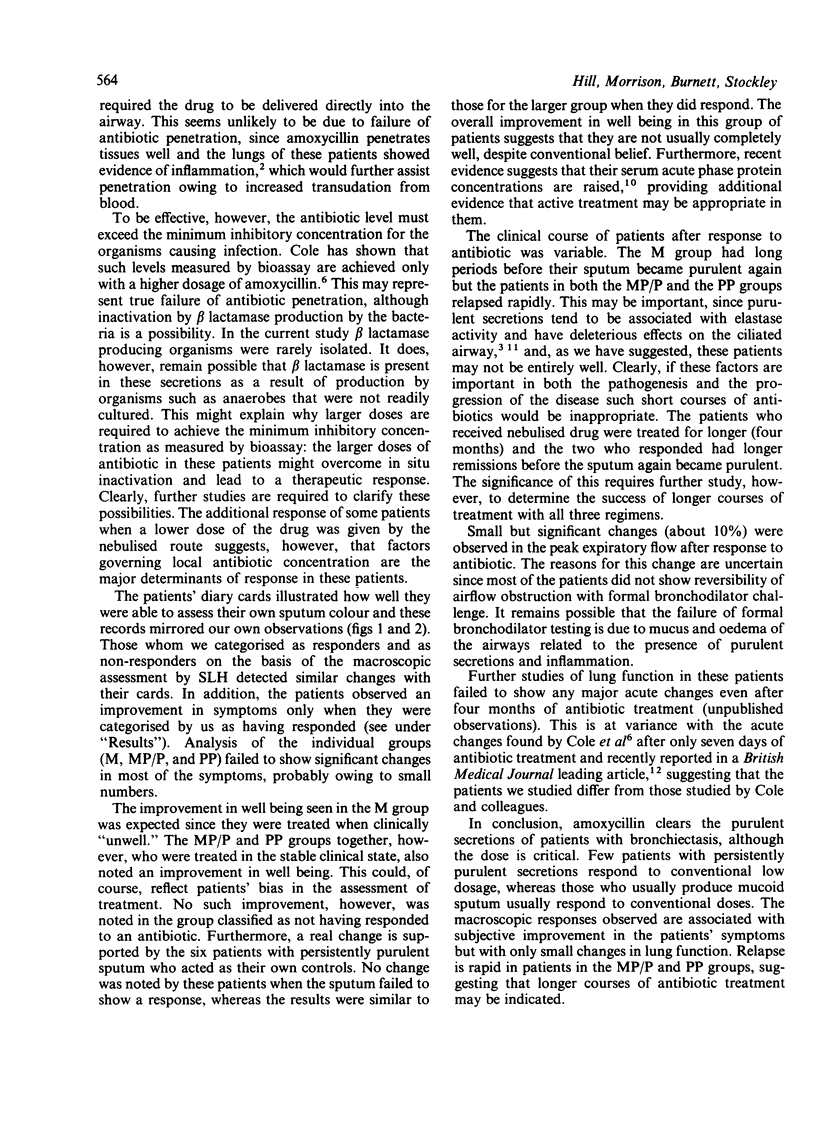Abstract
The effect of three amoxycillin treatment regimens on purulent secretions of patients with bronchiectasis has been studied. On the basis of information recorded on a diary card the patients were divided into three groups, according to the usual nature of their secretions: seven who produced mucoid sputum, which occasionally became purulent; seven whose secretions were usually mucopurulent but occasionally purulent; and 19 whose secretions were persistently purulent. Treatment with capsules of amoxycillin in a dosage of 250 mg three times a day resulted in clearance of purulent secretions in patients of the mucoid group when they were treated for a clinical exacerbation. The sputum remained clear in these patients for long periods before a further exacerbation (median 6 1/2, range 1-11 months). The mucopurulent-purulent group also responded to this dosage but sputum purulence returned more rapidly (median 9, range 4-31 days). Only three of the 19 (17%) patients with persistently purulent secretions showed a macroscopic response to this dosage, whereas seven (60%) of 12 patients who received the higher dosage (3 g sachets twice a day) responded. Among the failures, some responded to nebulised amoxycillin, suggesting that higher levels of amoxycillin in secretions are required in these patients. Macroscopic clearance of purulent secretions was finally achieved in most of the patients studied. The response was not always predictable from the results of sputum culture. Clearance of secretions by antibiotics was also identified by the patients, using a diary card score. Improvements in well being and in symptoms were noticed even in the group who usually produced mucopurulent and purulent secretions even though they appeared to be clinically stable before treatment.
Full text
PDF






Selected References
These references are in PubMed. This may not be the complete list of references from this article.
- Cochrane G. M. Chronic bronchial sepsis and progressive lung damage. Br Med J (Clin Res Ed) 1985 Apr 6;290(6474):1026–1027. doi: 10.1136/bmj.290.6474.1026. [DOI] [PMC free article] [PubMed] [Google Scholar]
- Cole P. J., Roberts D. E., Davies S. F., Knight R. K. A simple oral antimicrobial regimen effective in severe chronic bronchial suppuration associated with culturable Haemophilus influenzae. J Antimicrob Chemother. 1983 Feb;11(2):109–113. doi: 10.1093/jac/11.2.109. [DOI] [PubMed] [Google Scholar]
- Lourenço R. V., Loddenkemper R., Carton R. W. Patterns of distribution and clearance of aerosols in patients with bronchiectasis. Am Rev Respir Dis. 1972 Dec;106(6):857–866. doi: 10.1164/arrd.1972.106.6.857. [DOI] [PubMed] [Google Scholar]
- Smallman L. A., Hill S. L., Stockley R. A. Reduction of ciliary beat frequency in vitro by sputum from patients with bronchiectasis: a serine proteinase effect. Thorax. 1984 Sep;39(9):663–667. doi: 10.1136/thx.39.9.663. [DOI] [PMC free article] [PubMed] [Google Scholar]
- Stockley R. A., Hill S. L., Burnett D. Nebulized amoxicillin in chronic purulent bronchiectasis. Clin Ther. 1985;7(5):593–599. [PubMed] [Google Scholar]
- Stockley R. A., Hill S. L., Morrison H. M. Effect of antibiotic treatment on sputum elastase in bronchiectatic outpatients in a stable clinical state. Thorax. 1984 Jun;39(6):414–419. doi: 10.1136/thx.39.6.414. [DOI] [PMC free article] [PubMed] [Google Scholar]
- Stockley R. A., Hill S. L., Morrison H. M., Starkie C. M. Elastolytic activity of sputum and its relation to purulence and to lung function in patients with bronchiectasis. Thorax. 1984 Jun;39(6):408–413. doi: 10.1136/thx.39.6.408. [DOI] [PMC free article] [PubMed] [Google Scholar]
- Tegner H., Ohlsson K., Toremalm N. G., von Mecklenburg C. Effect of human leukocyte enzymes on tracheal mucosa and its mucociliary activity. Rhinology. 1979 Sep;17(3):199–206. [PubMed] [Google Scholar]


